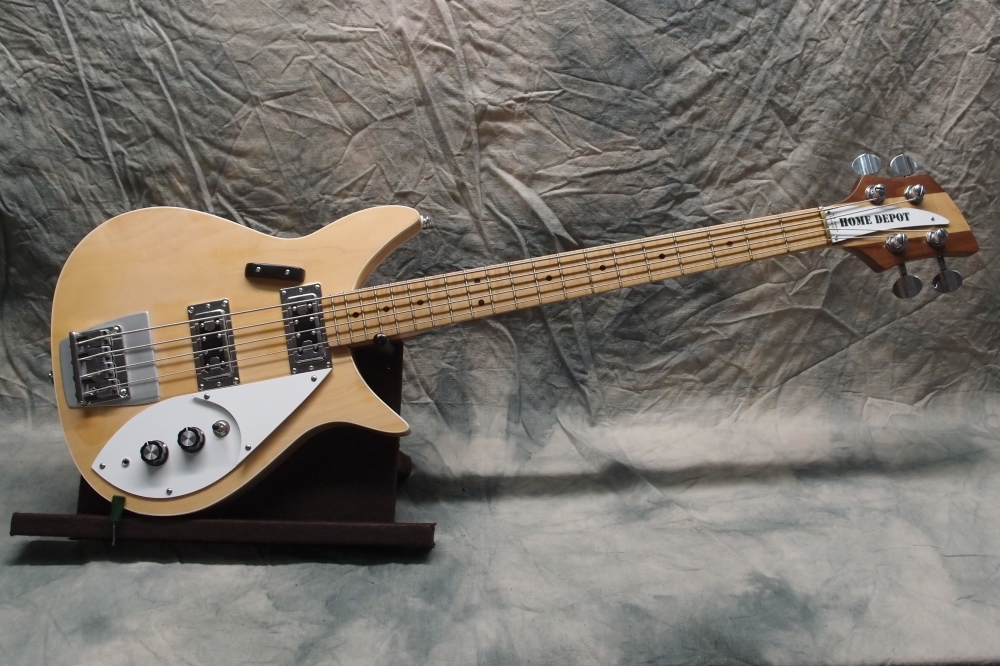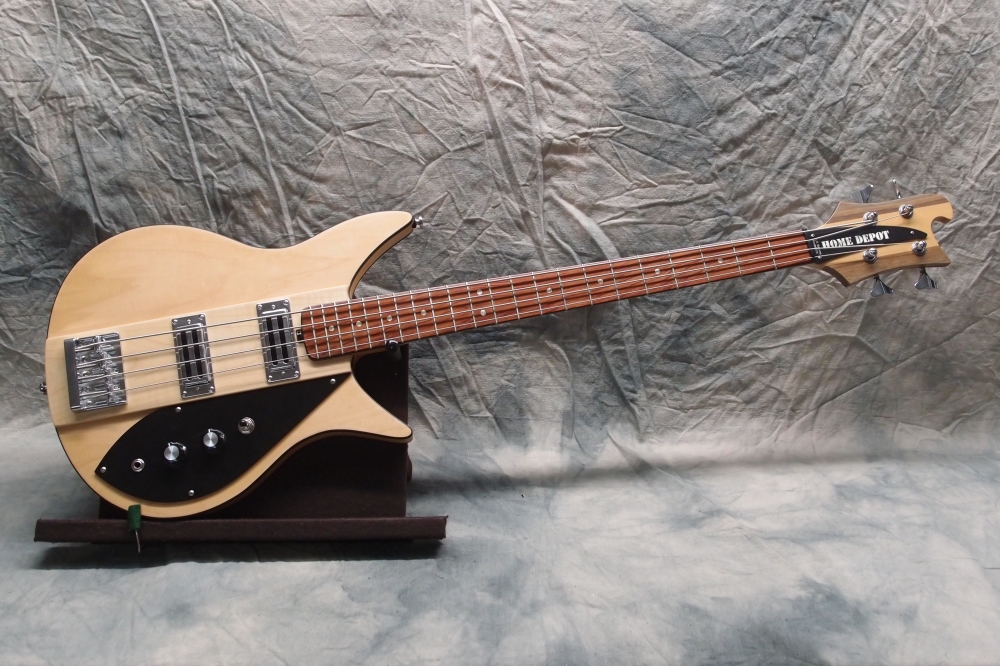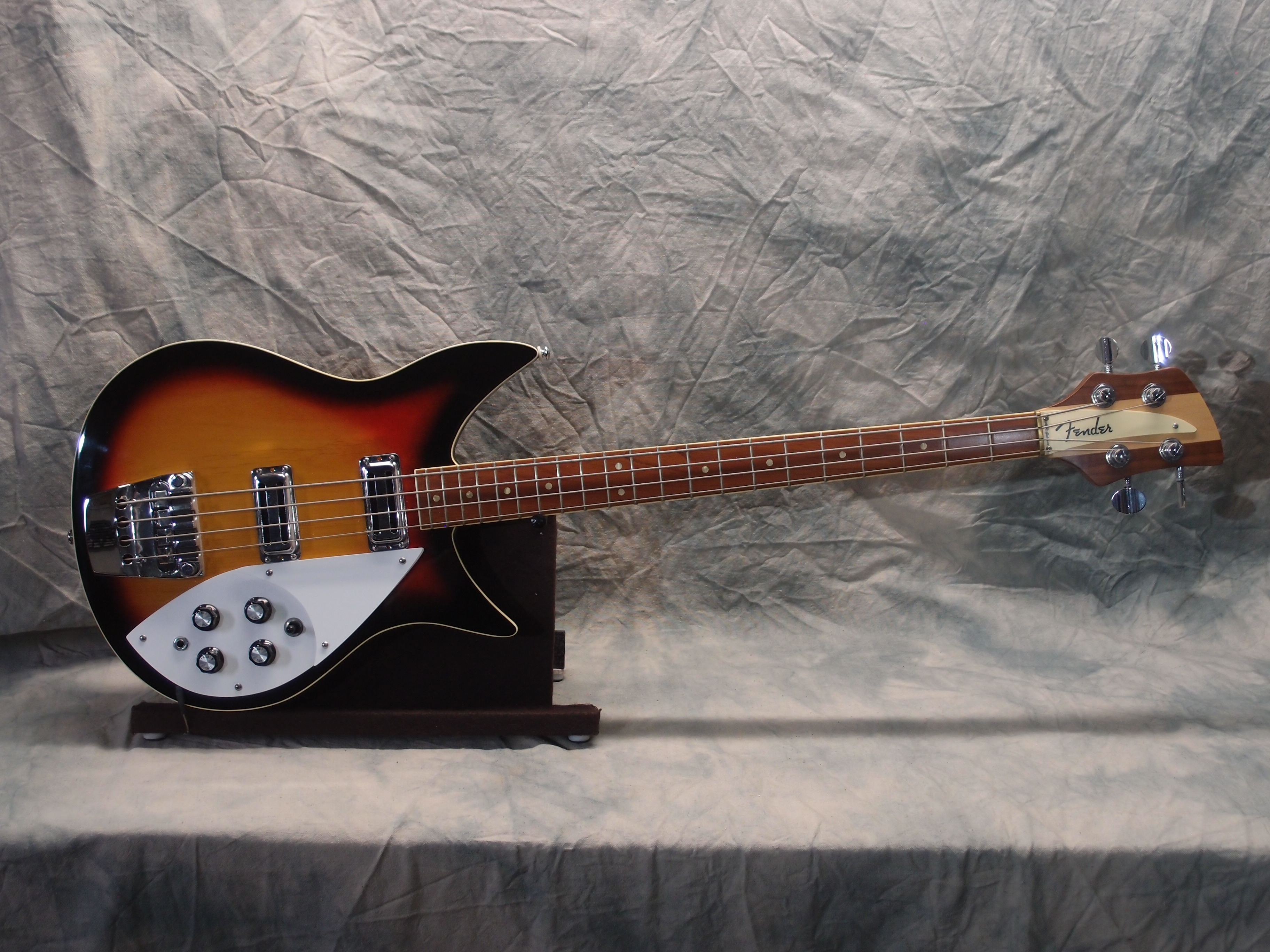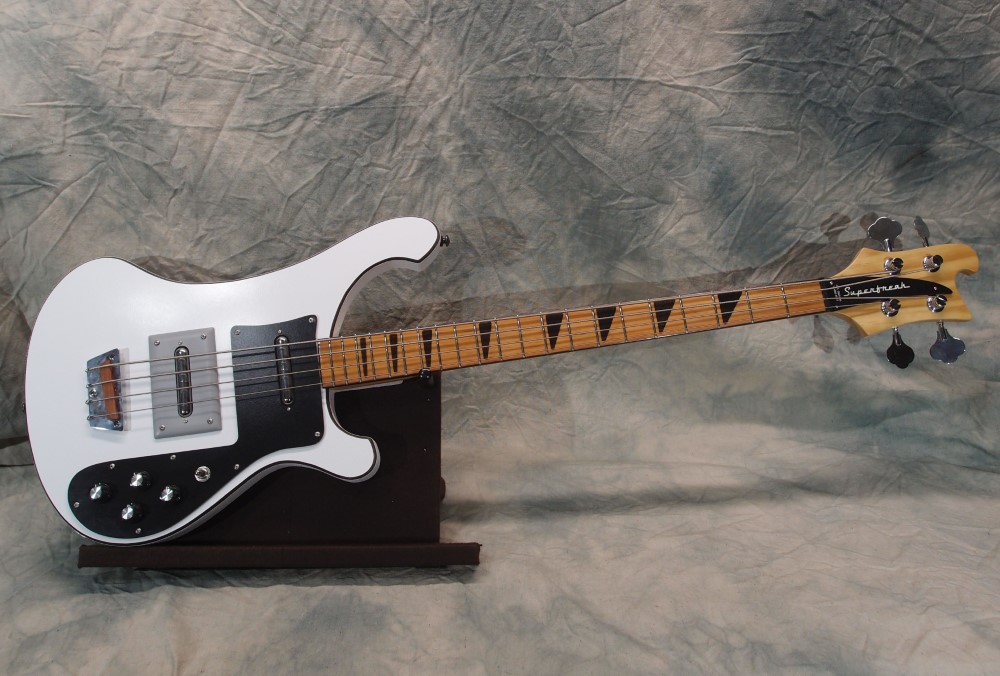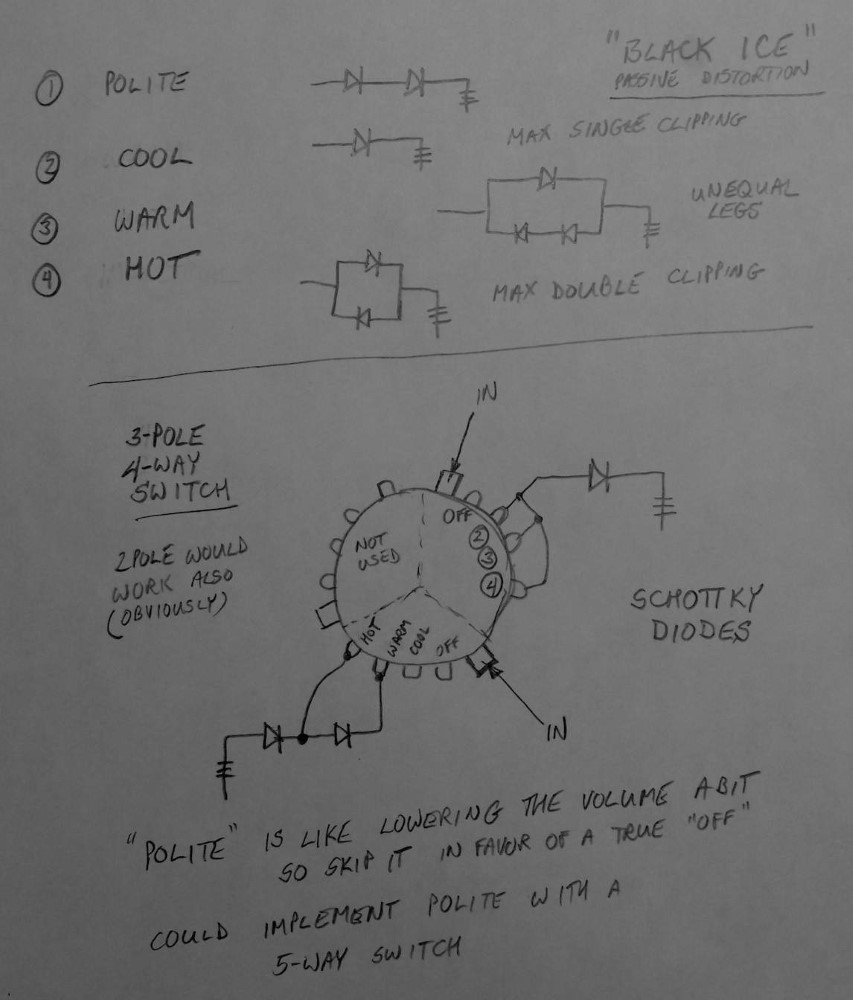Rickenbacker 325 Bass 2 (3/8)
Sep 6, 2018
Did a Bad Bad Thing
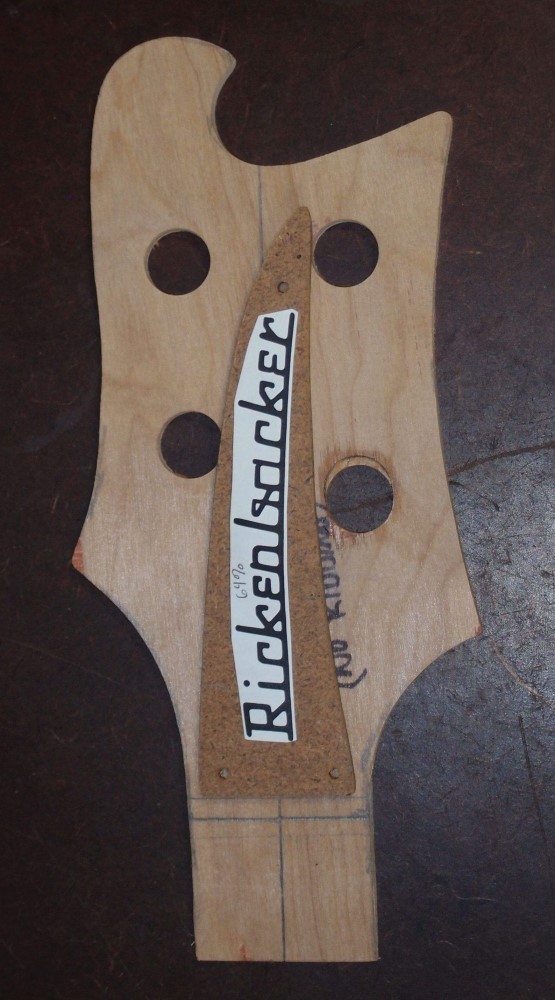
Here are the headstock and truss rod cover templates for the 325 build. Nowadays, with laser scanning and 3D printing, it would probably be pretty easy to make exact copies of the truss rod cover. That's an item that RIC guards jealously, along with the "R" tailpieces on the guitars. If you want a replacement, you have to send them your old one, along with your life's savings. Firstborn children are no longer required, the factory is largely automated now.
I have no intention of using the logo, I just wanted to play around with the stylus and touch screen on my new laptop. Actually using it would really be tempting fate, fate being RIC's legal department! It looks pretty good though, doesn't it? I have a totally different idea for this build. As long as I am just building this for myself, using the overall shape should be fair game though. Any lawyers out there?
Nov 4, 2018
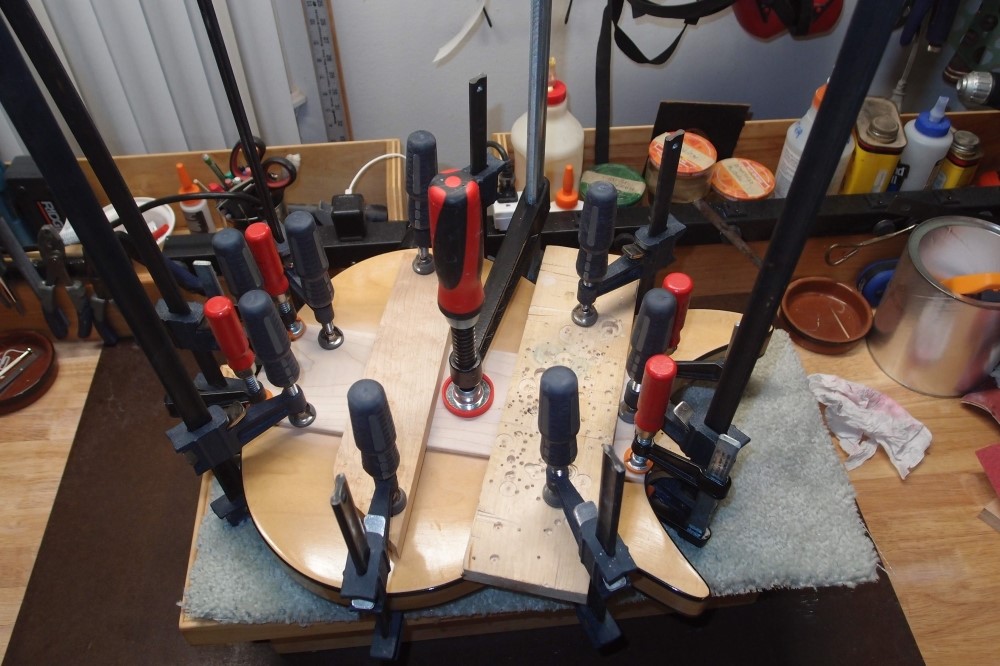
Finally found a use for the mega-clamp Home Depot gave me. It reaches right into the center of a body. Another Home Depot freebie. Now I wish I had six of them, it would be easier than using pairs of little clamps and cross-bars. There ended up being a small gap in one spot where the body is not perfect. I filled it with sawdust, then ran a bead of Crazy Glue all around.
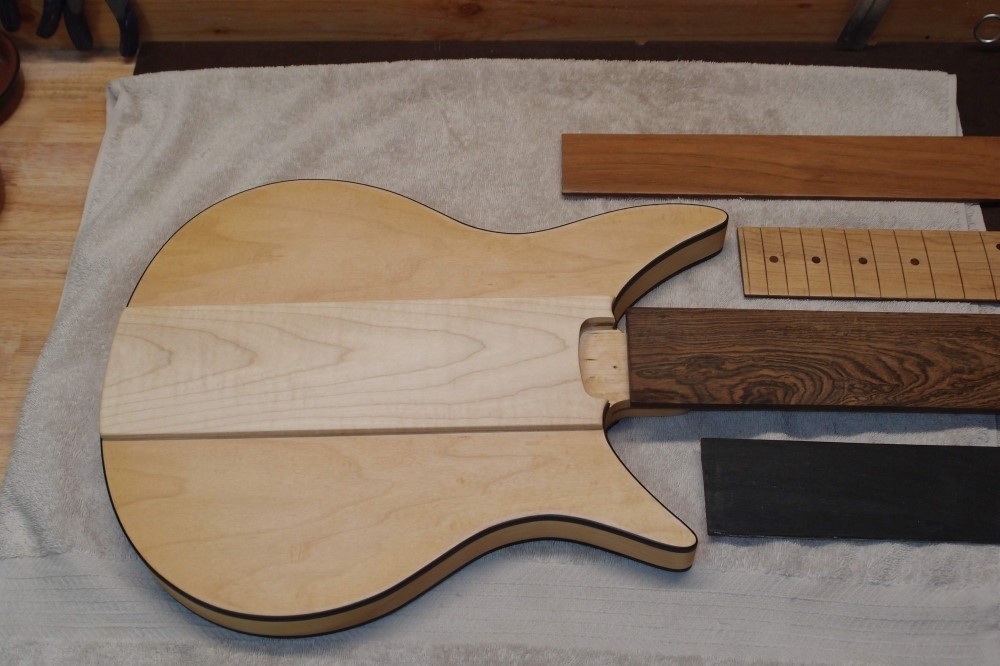
This body is just too big to be so thin, or too thin to be so big. So I added the centerpiece of 1/4" maple. It looks stark white against the finished body, but it will yellow-up to match with a few coats of poly. Here, I've sanded the whole body down and rubbed it all over with natural stain. It looks pretty good already. Now I have to get cracking on the neck. From top to bottom: Brazilian Cherry, maple, Bocote, and blackened oak. Decisions decisions.
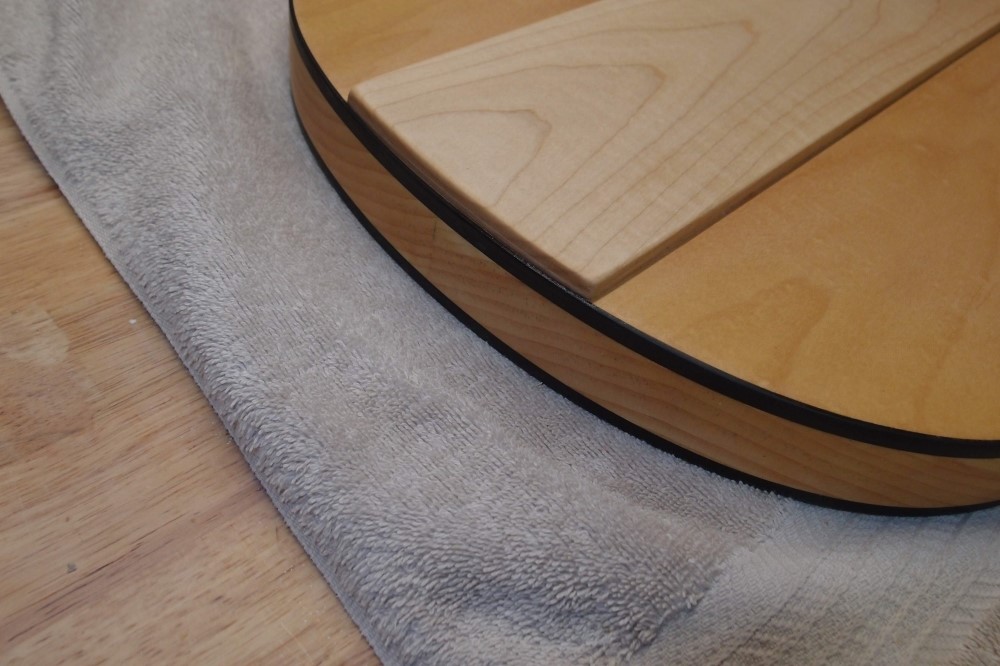
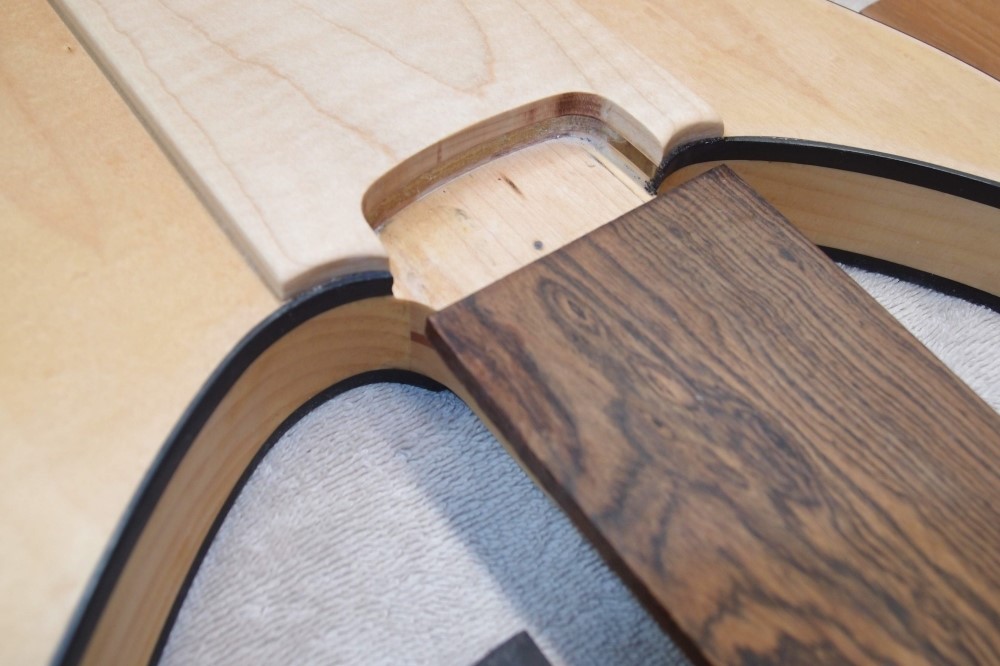
Here is how the new piece fits together with the binding. The extra depth also solves a problem with mounting the neck. All the hardware for this body was used elsewhere, and now it is going to be standard Fender geometry. 32" scale, 22 frets.
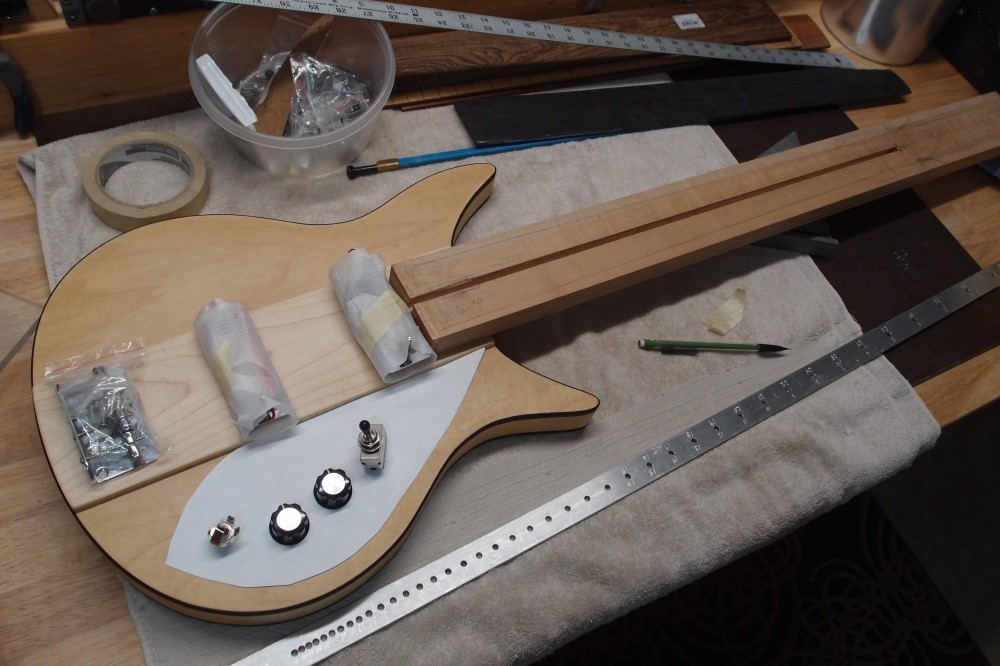
Fitting up some parts, paper pickguard. This one is going to be dead simple and cheap, befitting its history as salvage. This was 325 bass #2, which I ruined somehow, I can't remember. I got angry and grabbed a piece of alder and made 325 bass #3, earlier in the thread. Later I fixed this one and used it to practice binding. Experimental 325 bass #1 has also been reclaimed from the scrap heap and is coming along nicely. I want to spray them both at the same time.





